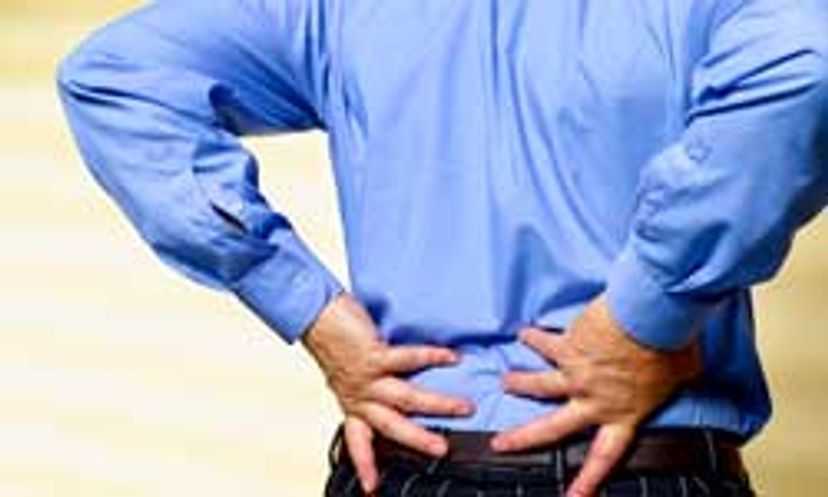
The symptoms of failed back syndrome appear after surgery if a nerve was accidently cut or damaged. Symptoms can include diffuse, dull and achy pain that radiates into the hips, buttocks and thighs.
A scarred nerve root can make the nerve overactive, causing pain known as radiculopathy.
The sciatic nerve is the longest and widest nerve in the body. It innervates the back of the leg from the hip to the toes.
Advertisement
The sciatic nerve stems from the area near the L4 and L5 intervertebral disks, which are the two disks most frequently injured. When injured, the discs bulge and may make contact with the nerves around them, causing pain.
The kidneys are located at the back and sides of the body, above the hips. Kidney pain comes from the kidneys but is often felt in the back in the area that the kidneys lie.
Kidney pain generally goes away once the infection is cured or the stone is passed. Pain coming from the kidneys will be tender to touch and may also present with pain during urination, fever, chills and blood in the urine. Back pain usually lingers, but is not usually worsened by pressing over the sore area.
Advertisement
Following an injury the body should heal stronger than it was before, in order to prevent further injury. The key to healing is that the body should be able to supply enough blood to the injured area to promote healing.
Smoking causes atherosclerosis, which is when plaques build up inside blood vessels, decreasing blood supply through those vessels. Blood is supplied to the spine through many small blood vessels which get blocked by smoking and are unable to supply the necessary amount of blood required for proper healing.
Osteoblasts are specialized cells that build bone tissue. Nicotine inhibits osteoblasts, leaving the spine with a reduced ability to rebuild itself.
Advertisement
Smoking inhibits hormones and chemicals that help the body deal with pain, making smokers more sensitive to pain.
CRPS affects the sympathetic nervous system, which is responsible for functions including heart rate, sweating, skin temperature changes and blood pressure. CRPS can be a very difficult disease to diagnose as symptoms vary and sometimes only a couple of symptoms appear.
A series of injections is given to treat CRPS. The earlier the treatment, the better the chances of success.
Advertisement
Blood pressure medications affect the sympathetic nervous system and are also used to treat CRPS.
Diabetic neuropathy is a common cause of pain in diabetes. Diabetes damages the tiny blood vessels that feed the delicate nerves in the peripheries, causing a lot of neuropathic pain.
Diabetics suffer from what is known as "stocking and glove" syndrome. Due to the nerve damage in their peripheries where the delicate nerves sit, diabetics often find it painful to wear gloves and socks.
Advertisement
In 1990 doctors at the American College of Rheumatology came up with a criteria for diagnosing fibromyalgia. To be diagnosed with fibromyalgia, patients have to show clear signs of muscle clumps, which feel somewhat like rubbery Rice Krispies, in 11 out of 18 identified spots on the body.
Shingles is a form of the chicken pox virus, a member of the herpes family but different to the virus that cause genital herpes. Once you have had the chicken pox, the virus remains in the body but is usually inactive.
Shingles can erupt due to a short weakening of the immune system as a result of illness or even stress. It is treated by treating the virus with an anti-viral drug and by treating the nerve pain with anti-convulsants.
Advertisement
An MRI is able to capture damage to cartilage, which cannot be seen on an X-ray.
A discogram involves a contrast dye being injected into a spinal disk using a needle. An X-ray is then taken to see if the disk is bulging or ruptured. Under X-ray, if damage is found, fluid can be injected back into the disk to maintain pressure in the disk.